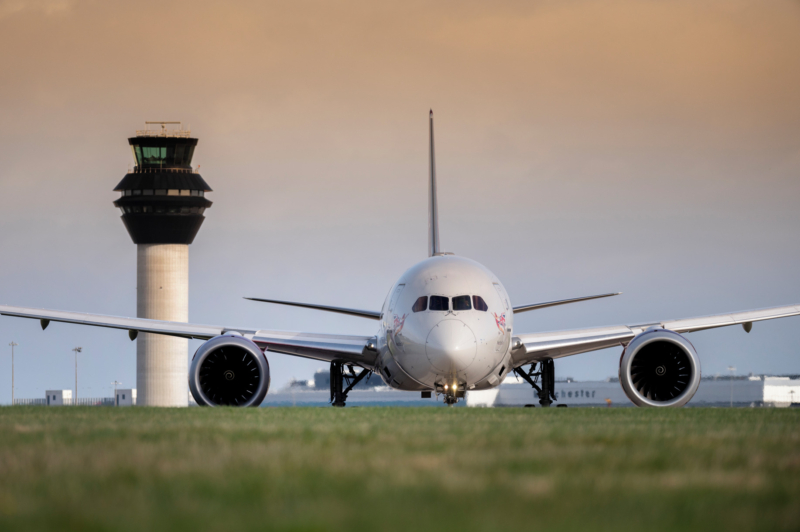Riding the storm
22 January 2024It’s very rare for a storm to blanket the whole of the UK and Ireland, as Storm Isha did yesterday. Rarer still for it to deliver the strength of winds that it did.
Isha made its presence felt in the south of England and Ireland, where the winds were gusting 70-75mph, south-westerly which meant crosswinds at our major airports in the south, with wind shear and turbulence adding extra challenges for flight crews.
And in the north of the country, the winds were even more fierce, with gusts of more than 90mph creating problems not just for aviation but the whole of the transport infrastructure.
The challenge for the aviation industry is the difficulty, as I mentioned above, for flight crew bringing their aircraft in to land. We need to increase the separation between aircraft to manage their safe landing, which means the number of aircraft arriving is reduced by limiting the number of aircraft allowed into the airspace at any one time.
That creates further challenges. If an aircraft aborts its landing – what we call a go-around – because the conditions aren’t optimal for touchdown, we must then re-position that aircraft into the landing sequence.
For those aircraft which simply can’t land safely, they have to divert to another airfield. Yesterday, because the storm blanketed the whole country, we alerted airlines that their normal diversion airfield might not be available and they should plan to potentially have to divert further afield. As UK airfields started to fill up with aircraft either unable to depart or diverted, throughout the evening we monitored the situation as aircraft diverted from Dublin to Deauville, Edinburgh to Cologne and wherever in the UK was least affected and space still available at the pilot’s critical decision point.
Yesterday there were more than 100 go-arounds at airports across the country and we still don’t have a total on the number of diversions. You can read more about go-arounds here.
We held videoconferences for airlines and airports from lunchtime yesterday every 90 minutes to help them plan their operations as Storm Isha approached. More than 100 operations experts from across the industry joined our calls. The Met Office, who are embedded in our operation, gave updates on the storm’s progress, the wind speeds, gusts, the spread of the storm and the airfields most affected.
By planning ahead, we did everything possible as an industry to avoid the need for mass diversions.
Kudos to the team at @NATS…At one point last night our groundspeed in an A350 was slower than I’d normally fly in a Piper Arrow… and we managed to be exactly spaced against the aircraft ahead. It was a LOT bumpier than the video would imply. Thanks to @BigJetTVLIVE for staying… https://t.co/wihjjUVUv9
— Scott Bateman MBE ✈️ (@scottiebateman) January 22, 2024
Airlines revised their schedules to try to ensure the least disruption not just for yesterday, but also to have their aircraft in the right place this morning to be able to resume as normal an operation as possible. Many flight crews loaded additional fuel in case of diversion and some airlines cancelled complete rotations in order to protect their schedules today.
This morning our operation at NATS is, pretty much, back to normal. The wind has reduced in strength and moved westerly, which works better for busy east/west facing runways in England – although there are now thunderstorms crossing the country!
For airlines and airports, though, today will continue to be a challenge as they work to retrieve aircraft which are out of position and look after passengers who haven’t yet got to their destination. That means we will be dealing with a number of repositioning flights in addition to the normal operation, helping our customers get schedules back on track.
Our shared objective yesterday was to keep the entirety of the network safe and keep as much of the UK aviation operation on track as we could. Despite Storm Isha’s best efforts, and thanks to the hard work of the entire industry over a very long day and night, there has been much less disruption than there might otherwise have been.
Comments
Please respect our commenting policy and guidelines when posting on this website.



